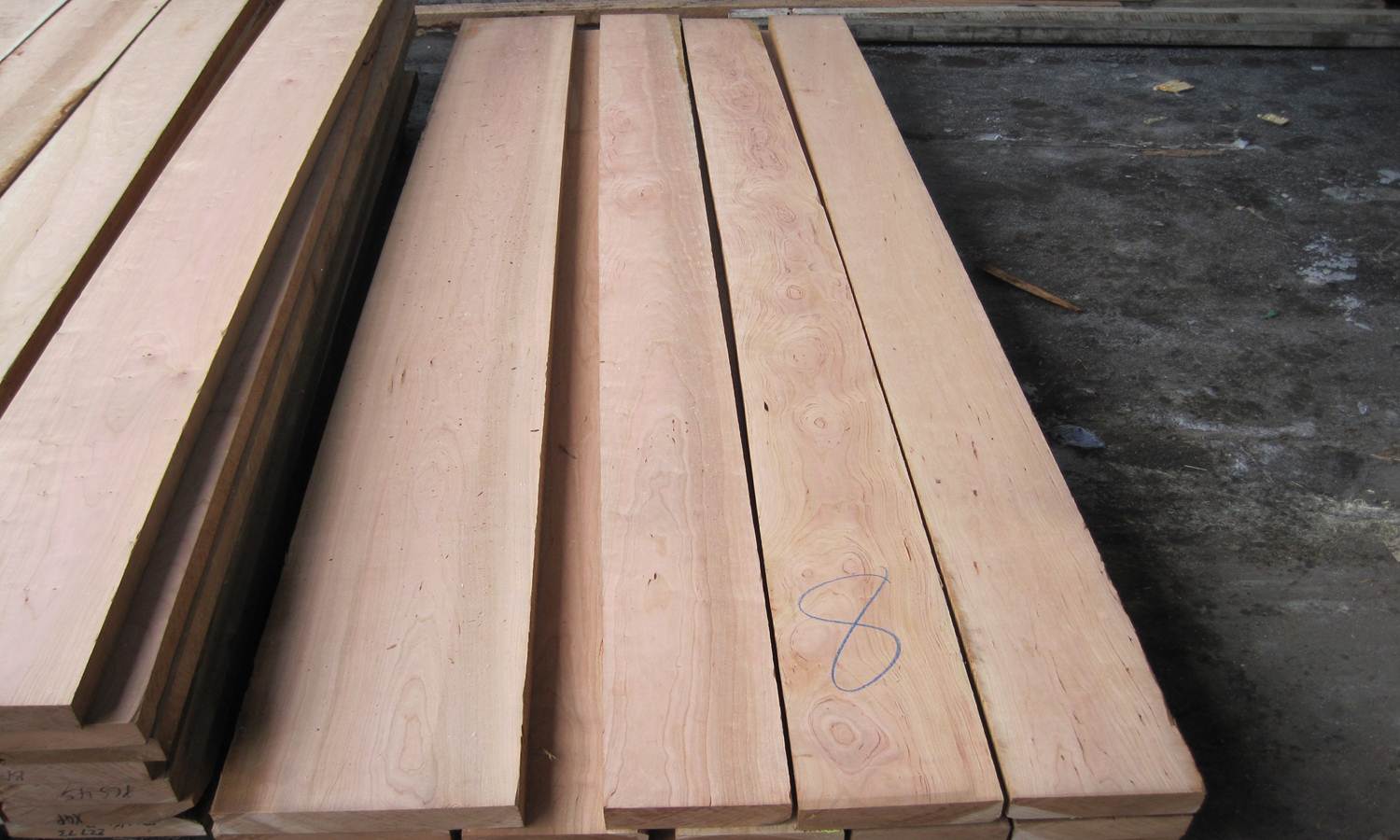 For generations, woodworkers and craftsmen have chosen Cherry as their lumber of choice for quality manufacturing. Cherry, (Prunus serotina), is frequently used in everything from cabinets to fine furniture.
For generations, woodworkers and craftsmen have chosen Cherry as their lumber of choice for quality manufacturing. Cherry, (Prunus serotina), is frequently used in everything from cabinets to fine furniture.But not all Cherry lumber is the same. There are various different issues that need to be considered when ordering Cherry which could impact the quality of lumber you receive. That’s why it is important to choose the best hardwood lumber supplier to meet your needs.
Here are 5 tips we like to suggest to our customers that they consider when ordering cherry.
- Understand the growing region – Most Cherry is found throughout the eastern part of the United States. A common belief is that most of the best Cherry is sourced from the Alleghany mountain region which spreads throughout Pennsylvania, New York, West Virginia and Ohio. Even if your supplier is outside this region, consider making sure they have access to timber from this area so you can receive some of the finest Cherry for your use.
- State your preference for heartwood and sapwood - One of the characteristics of Cherry is the distinct difference between its heartwood and sapwood. This is sometimes expressed in ratio terms such as 90/50 or 90/70. One is not better than the other per say, it just depends on how you are going to use the lumber. It also indicates that the hardwood supplier has taken the time to sort their Cherry lumber in a special way to meet customer needs. If you need a specific consistency of heartwood you are looking for throughout a load or a board be sure to express your requirement to your supplier.
- Look for widths that work for you - Cherry is one of those hardwood species that is sought after to produce veneer. Many times a supplier will choose to sell off some of the best quality and largest hardwood Cherry logs to veneer producers. When this is the case the average width they are able to produce from the saw logs could be limited. So find a supplier that can provide you with the width of boards you need for your application. Sometimes you can find loads of Cherry that are 10” and wider or even 12” and wider from a particular supplier.
- Determine the potential for consistent supply – Since Cherry is usually harvested from a relatively small growing area the competition for Cherry logs can be high. We suggest you develop a comfort level with your hardwood supplier, make sure they are able to consistently and regularly offer you loads of Cherry that work for your business. Try to avoid a situation where your supplier is low on inventory which causes you to search elsewhere.
- Learn about the available proprietary grades available – Cherry is one of those species that allows itself to have many different supplier specific proprietary graded offerings. Whether it be a specific color specification, length sort or even something to do with character marks like a rustic grade, hardwood suppliers often market special offerings that might enhance your manufacturing process, improve your lumber yields and save you money. Look for them!
Several members of the Baillie Group regularly manufacturer cherry hardwood lumber including Smyrna, Titusville, Blue Triangle Hardwoods and Wagner Lumber. If you are looking for a new hardwood lumber supplier for your cherry we would be happy to help!
What other best practices can you share when it comes to choosing a hardwood cherry supplier? Let us know!
Tony C.
The Baillie Group

